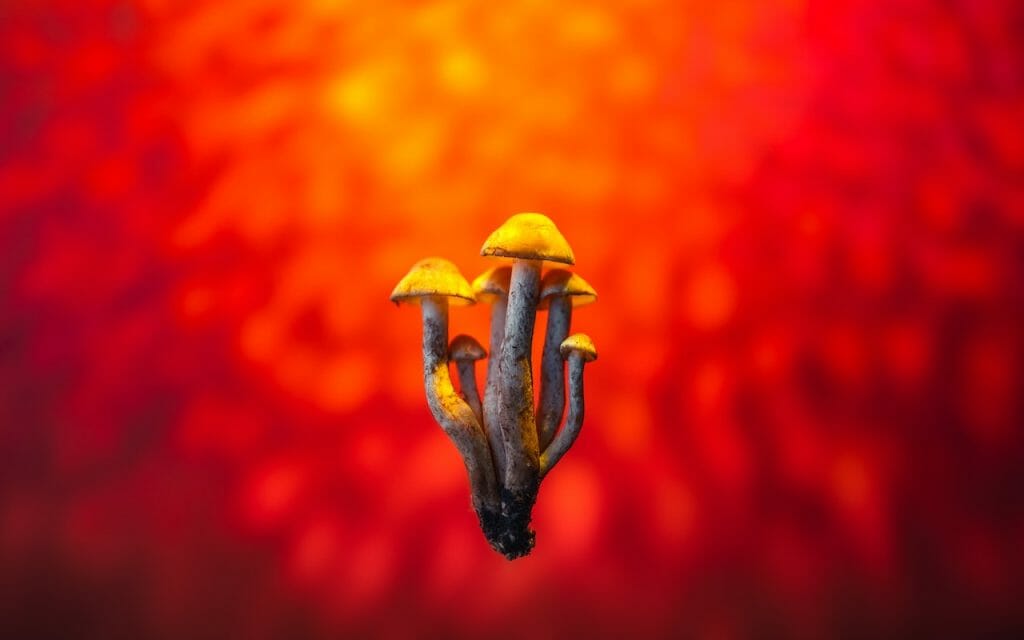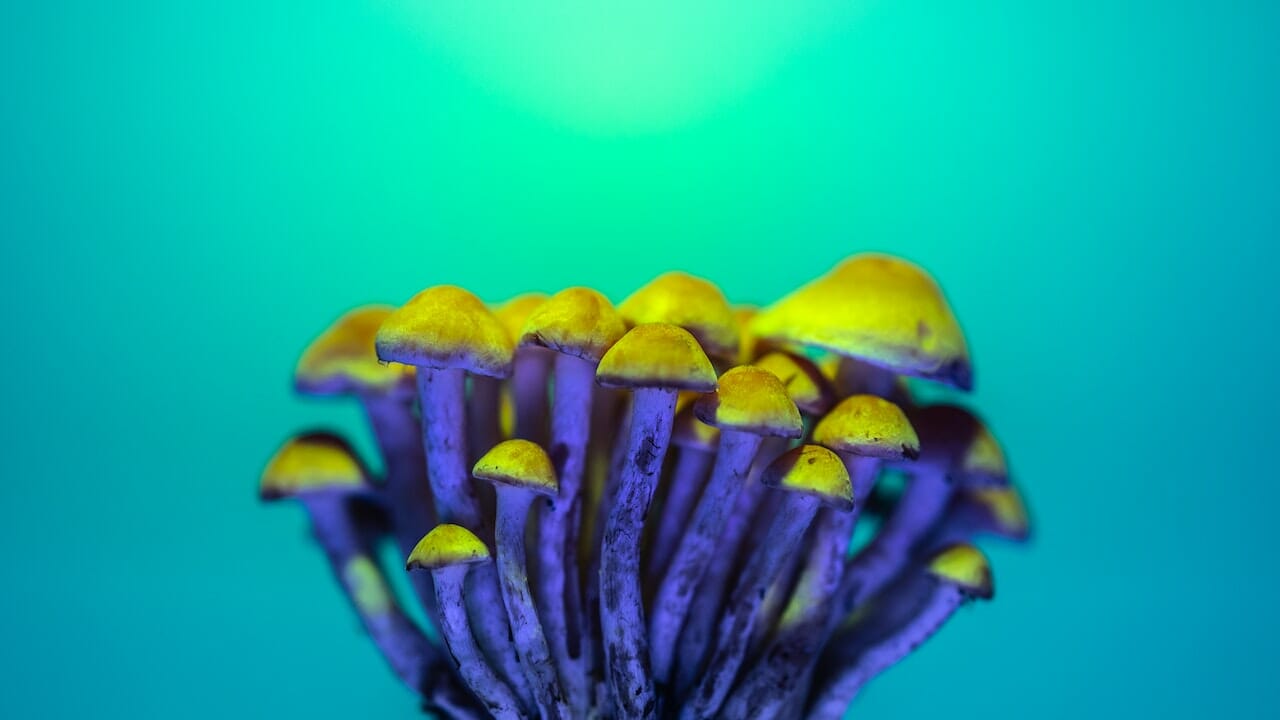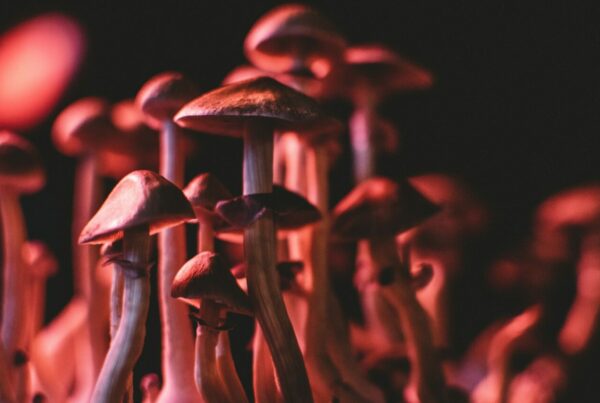Lysergic acid diethylamide (LSD) is a profoundly potent hallucinogen that is among the most thoroughly studied psychedelic substances. Although it was initially recognized primarily for its recreational use, LSD has evolved into a psychoactive compound that potentially benefits mental health. This change in understanding has paved the way for research into the effects of LSD in more user-friendly forms, such as LSD edibles.
Key Insights:
- LSD, a powerful hallucinogen, originates from the ergot fungus.
- LSD shares similarities with psilocybin and interacts with the 5-HT2A receptors.
- LSD triggers visual alterations, mood changes, ego dissolution, and pseudo-hallucinations.

Comprehending LSD
LSD is an extremely potent hallucinogen that can drastically warp a person’s sense of reality and profoundly misshape the senses. LSD comes from “ergot,” a fungus that grows on rye and other grains.
On a molecular level, LSD is a sophisticated chemical that belongs to the ergoline family. It comprises a bicyclic hexahydroindole group and a bicyclic quinoline group (lysergic acid). The term ‘Lysergic Acid Diethylamide’ is derived from the functional group attached to its core. LSD’s structure is akin to other ergoline alkaloids, such as ergotamine, found in the ergot fungus Claviceps purpurea, and the neurotransmitter serotonin.
The Influence of LSD
Upon consumption, LSD enters the brain and initiates chemical reactions that can persist for several hours. LSD can cause the following short-term effects:
- Erratic mood changes
- Distortion of perception
- Feeling dizzy
- Decreased appetite
- Lack of motor control
The Advantages What are the Benefits of Using LSD?
LSD offers a variety of benefits depending on the dosage taken. Most studies focus on the advantages associated with the consumption of smaller amounts of this psychedelic substance. In this article, we will explore the potential positive effects of LSD use.
Pain Management and Neural Development
Researchers at Maastricht University discovered that a single microdose of LSD can produce analgesic effects lasting at least five hours or more.
In a Cold Pressor Test where participants held their hands in water at 3°C (37.4°F) for as long as possible, those who took 20 mg of LSD were able to keep their hands submerged 20% longer than those who did not. They also reported less pain and discomfort.
Additionally, LSD can support the development and growth of the brain’s 86 billion neurons. Moderate doses of LSD, from 5 to 20 ug, increase BDNF levels in blood plasma. This is crucial as mood disorders like depression, often associated with neuroplasticity problems, may benefit from LSD’s positive impact on neural health.
Mental Health Enhancement
Dr. Robin Carhart-Harris of Imperial College London introduced the entropic brain hypothesis. This theory posits that mental health disorders are caused by rigid thought patterns, perpetuated by an overactive default mode network (DMN). Psychedelic substances like LSD can disrupt the DMN, increase brain entropy, and promote the dissolution of negative neural pathways while fostering the development of positive ones.
One study involving over 1,000 microdosers observed a reduction in depression. Another extensive cross-sectional study noted a decrease in negative mood and harmful attitudes, and an increase in open-mindedness and cognition.
Addiction Treatment
A meta-analysis of randomized-controlled clinical trials applying LSD in psychiatry concluded that it is most effective in treating alcohol dependence. This conclusion is further reinforced by the favorable outcomes reported by many patients treated for alcoholism by Humphrey Osmond and at the Spring Grove Hospital Centre during the 1950s and 1960s.
Relief from Anxiety and Depression at Life’s End
Research by Dr. Peter Gasser has demonstrated that LSD-assisted psychotherapy can be beneficial to terminally ill cancer patients by reducing their anxiety about death. Additionally, it has been observed that such therapy can enhance the patient’s overall quality of life. Currently, a Phase 2 trial is being conducted to further explore the potential effects of LSD therapy on depression.
Deciphering LSD Edibles: Their Components and Manufacturing Process
LSD edibles refer to a variety of food and beverage items that are infused with the hallucinogenic compound, LSD. These edibles can take several forms such as chocolates, candies, and baked items, or even unique products like LSD mints.
What’s Inside
- LSD: This is the active ingredient that triggers hallucinogenic effects. It is carefully measured and incorporated into the edible.
- Edible Base: The LSD is usually dissolved or infused into an edible medium such as a gummy, candy, sugar cube, or other edible substances. These mediums act as carriers for the hallucinogenic compound.
- Flavouring and Ingredients: The specific edible product may contain flavourings, sweeteners, and other ingredients to enhance taste and texture. These could include natural or artificial flavours, colours, and sugars, and can vary widely.
Manufacturing Process:
- LSD Synthesis: The first step involves the chemical production of LSD. This process requires a deep understanding of organic chemistry and access to necessary chemicals, equipment, and a laboratory setup.
- Liquid Formulation: Once the LSD is synthesized, it is usually transformed into a liquid form by dissolving it in a solvent. This liquid acts as a concentrated LSD solution.
- Infusion: The liquid LSD is then infused into an edible medium such as gummy candies, sugar cubes, or blotter paper. The infused medium absorbs the liquid, enabling the LSD to be consumed orally.
Experiencing the Psychedelic Effects of Psychoactive Compounds in LSD Edibles
LSD produces intense visual effects. Colours can appear more vivid, objects may seem to have halos or rainbows around them, and shapes can transform. Users may see patterns or images, whether their eyes are open or closed.
LSD introduces a window to transform one’s perception of self and environment. It can trigger a range of mental states where thoughts may manifest in a clear and meaningful way, or they may seem nonsensical. The substance can also alter the perception of time, space, and body image, blurring the boundaries between the self and the external world. Some users even report a fusion of senses, such as seeing music or hearing colours.
Suggested LSD Products
LSD edibles are plentiful on the market, yet it’s pivotal to buy from a trusted supplier. You must confirm that the edibles contain LSD and not other substances, including PCP (embalming fluid), ecstasy, or ketamine.
Deadhead Chemist – LSD Infused Gummies
Deadhead Chemist offers LSD-infused gummies, each containing 100 micrograms (ug) of LSD, in various flavours. Each package contains a single gummy, which has demonstrated promise in assisting individuals suffering from conditions such as obsessive-compulsive disorder (OCD), post-traumatic stress disorder (PTSD), alcohol dependency, depression, and cluster headaches.
Deadhead Chemist – Mint Tea
Deadhead Chemist’s raspberry mint tea provides a more enjoyable and taste-filled way to experience the effects of LSD. LSD and other psychedelics act like the serotonin neurotransmitter, enhancing the brain’s state of flow.
Earthly Delights – Candy Flips
Candy flipping became a trend during the late 1980s rave culture. Today, explorers and party enthusiasts continue to enjoy the magic of these two remarkable substances. Users frequently experience deep feelings of love and interconnectedness, along with captivating visual effects like enhanced colours, object transformation, and complex geometric patterns.
Concluding Remarks
LSD has a historical reputation for inducing transformative experiences. With the rise in scientific knowledge about this substance, its appeal has grown, leading to the development of LSD-infused edibles, offering a fresh approach for users. These delicious edibles have become a popular way to safely and enjoyably experiment with LSD in controlled doses.
As the leading supplier in Canada of first-rate online shrooms, Shrooms Toronto Canada provides an extensive variety of LSD-based edibles and cannabis products. Explore our collection at your own pace, add your chosen products to your cart, and sit back while we handle the delivery. Our diverse range also includes psilocybin shrooms, edibles, beverages, and capsules for your convenience. Be sure to check out our LSD delivery page for additional details!
Frequently Asked Questions
How does LSD differ from psilocybin?
FEATURES LSD PSILOCYBIN Source Semi-synthetic chemical compound Naturally occurs in fungi Available Forms Tabs, microdots, liquid, gummies, blotter paper Dried mushrooms, capsules, teas, chocolates Potency Highly potent, dosed in micrograms (ug) Varies depending on the mushroom species and preparation method Onset and Duration Quick onset (15-60 minutes), short duration (3-5 hours) Gradual onset (30-60 minutes), moderate duration (4-6 hours)
How can one avoid negative experiences with LSD?
- Choose Your Surroundings Wisely
- Prepare Your Mindset
- Start with a Small Dose
- Have a Trip Guide Present
- Create a Peaceful Environment
- Use Deep Breathing and Grounding Methods
- Embrace the Experience and Let Go
How long do the effects last?
The acid’s effects typically begin to show between 30-60 minutes after ingestion. Individuals with a higher sensitivity to psychedelics might start to feel the effects In just a quarter of an hour, you’ll be able to discern if you’ve consumed acid. Roughly an hour later, your trip will peak. During this phase, time might feel like it’s slowing down and hallucinations may occur.
Hold on, feeling detached from reality in this phase is not unusual. The peak phase typically lasts between 3 to 5 hours, followed by the offset phase that continues for another 3 to 5 hours.
How does LSD interact with the human body?
LSD mainly interacts with the brain’s serotonin system by binding to and stimulating the 5-HT2A receptor. This engagement sets off a sequence of neurochemical and physiological responses. The effects of LSD, which can vary widely, can be influenced by specific factors.
Does LSD come in forms other than edibles?
Yes. LSD is available in several forms. The four primary types of LSD products are blotter paper, liquid solutions, tablets/microdots, and gelatin sheets.
Further Reading:
| FEATURES | LSD | PSILOCYBIN |
| Source | Semi-synthetic chemical compound | Naturally occurs in fungi |
| Available Forms | Tabs, microdots, liquid, gummies, blotter paper | Dried mushrooms, capsules, teas, chocolates |
| Potency | Highly potent, dosed in micrograms (ug) | Varies depending on the mushroom species and preparation method |
| Onset and Duration | Quick onset (15-60 minutes), short duration (3-5 hours) | Gradual onset (30-60 minutes), moderate duration (4-6 hours) |





